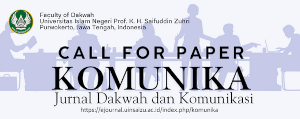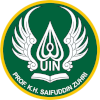HERMENEUTIKA AL-QUR’AN FAZLUR RAHMAN METODE TAFSIR DOUBLE MOVEMENT
DOI:
https://doi.org/10.24090/komunika.v7i1.364Keywords:
Al-Quran, Method, Hermeneutics, Fazlurrahman, TafsirAbstract
AbstractThis paper will describe the method of assessment of Al-Quran usingDouble Movement Interpretation. A new approach that emphasizes on awarenessof the text, context, and contextualization. The historical characteristic of Al-Qur'an led to the emergence of the idea and theory of hermeneutic (method ofinterpretation). This theory became work-effort which is so urgent to bedeveloped in understanding the meaning of Al-Qur'an as a whole. It is hoped thatthe theological and legal ethics parts can be placed in a whole (total) coherent.Fazlur Rahman criticized that the classical interpretation methods tend touse the approach in interpreting Al-Qur'an separately, resulting the emergences ofnew problems. The interpreters have implemented the appropriate interpretationof the verse-by-verse chronology in the codex, although sometimes they also referto other verses.Fazlurrahman assumed that the relationship pattern or model of therevelation built between Al-Qur'an (The Text), God (Allah) is the author, andMuhammad ( The Reader and The Author). The assumptions that Muhammad isthe receiver and speaker asserted that Muhammad participated in psychology,both in mental and intellectual in acceptance that revelationDownloads
Download data is not yet available.
Downloads
Issue
Section
Articles
License
Authors who publish with this journal agree to the following terms:
- Authors retain copyright and grant the journal right of first publication with the work simultaneously licensed under a Creative Commons Attribution-ShareAlike 4.0 International License that allows others to share the work with an acknowledgement of the work's authorship and initial publication in this journal.
- Authors are able to enter into separate, additional contractual arrangements for the non-exclusive distribution of the journal's published version of the work (e.g., post it to an institutional repository or publish it in a book), with an acknowledgement of its initial publication in this journal.
- Authors are permitted and encouraged to post their work online (e.g., in institutional repositories or on their website) prior to and during the submission process, as it can lead to productive exchanges, as well as earlier and greater citation of published work (See The Effect of Open Access).
























